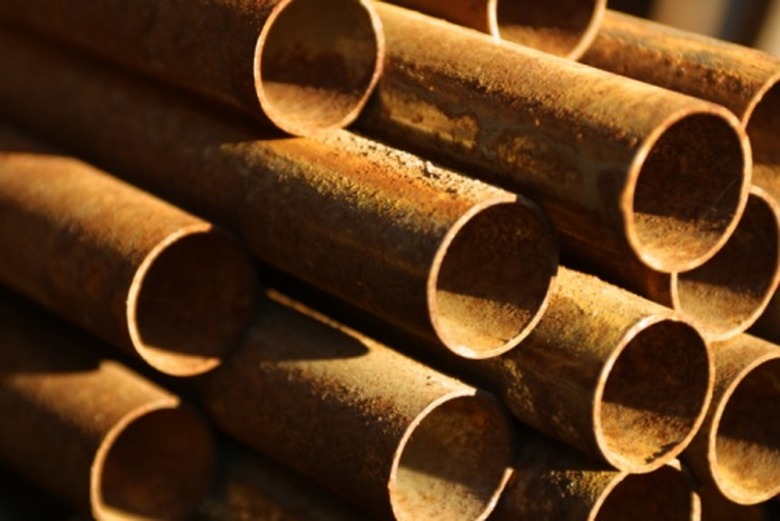How To Connect Non-Threaded Galvanized Pipe
Things Needed
-
Tape measure
-
Coupling
-
Carpenter's level
-
Hacksaw (or power saw)
-
Metal sander
-
Cloth
-
Water-based degreaser
-
Torque wrench
Tip
Use a stainless steel coupling if the galvanized pipe is in a damp position to avoid problems associated with rust.
Connecting together galvanized pipes that are non-threaded uses a coupling that creates a sealed joint. It is important to know the type of coupling to use for galvanized pipe and the fitting procedure so the pipe is leak free. Galvanized pipe has a zinc coating that is either rough or smooth depending on the type of zinc and steel heating process. Most traditional galvanized pipe is rough, and this causes concern when trying to securely seal the two pipes.
Step 1
Measure the outer diameter of each pipe, using a tape measure. Choose a standard coupling if the diameters match. Choose a stepped coupling if the diameters differ.
Step 2
Look at the galvanized surface of the pipes to determine whether the coating is rough or smooth. Choose a coupling manufactured to accommodate rough surface pipes if the galvanized coating looks and feels textured. Ask for a "rough surface" coupling because these have tolerances for all types of uneven pipe surfaces such as concrete and cast iron pipes.
Step 3
Align a carpenter's level against the end of the non-threaded pipe to check that the end is square. Cut the end with a hacksaw or power saw to square each pipe if the end is not flush. Remove rough edges on the pipe end with a metal sander.
Step 4
Wipe the pipes with a cloth and a water-based degreaser to remove dirt and stains on the coupling area. Place the ends of the pipes together. Center the coupling on the pipe joint, and mark a pencil line on each pipe at each end of the coupling.
Step 5
Insert one end of the non-threaded galvanized pipe into the coupling. Align the coupling end with the drawn line on the pipe. Insert the second pipe into the coupling and center the coupling between the two drawn lines.
Step 6
Tighten the fastening bolts until the coupling just holds the galvanized pipes in place. Use a torque wrench set at the coupling's marked torque requirement to evenly fasten the bolts until the wrench clicks off.
